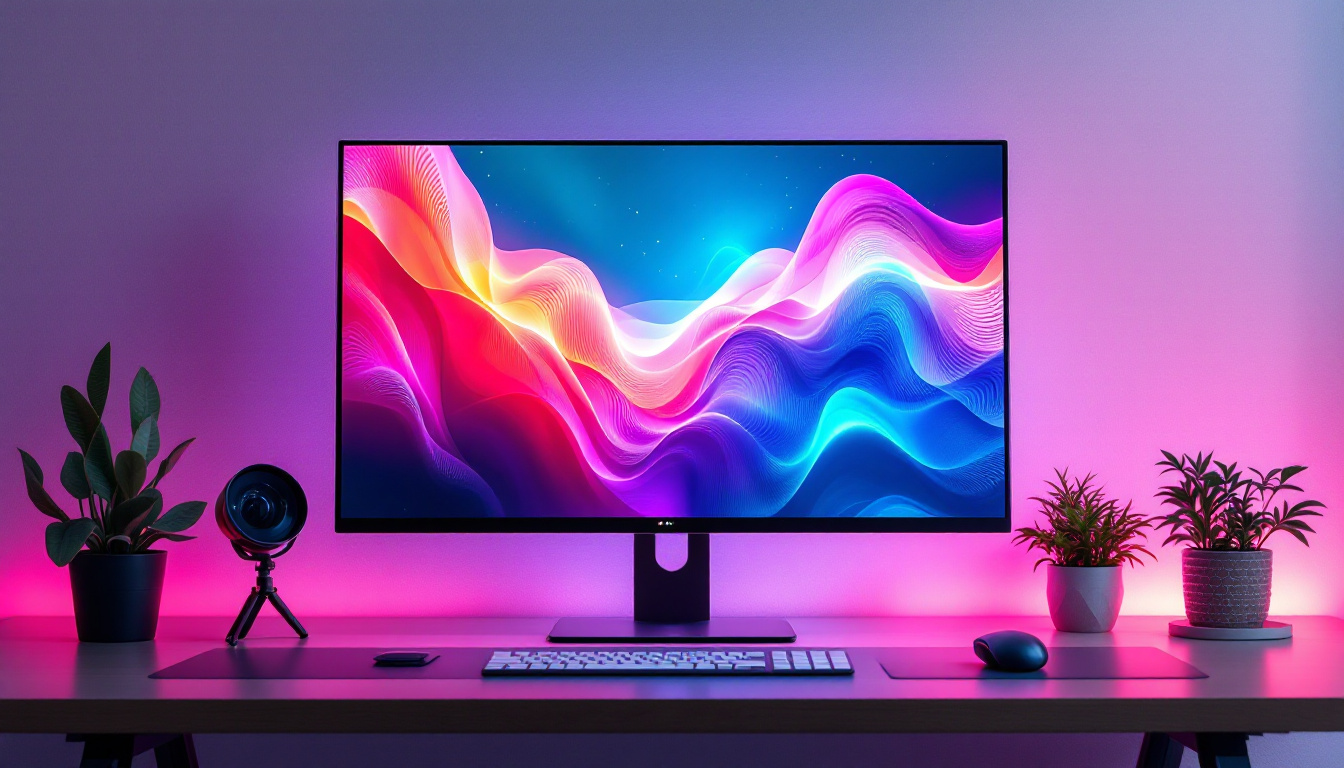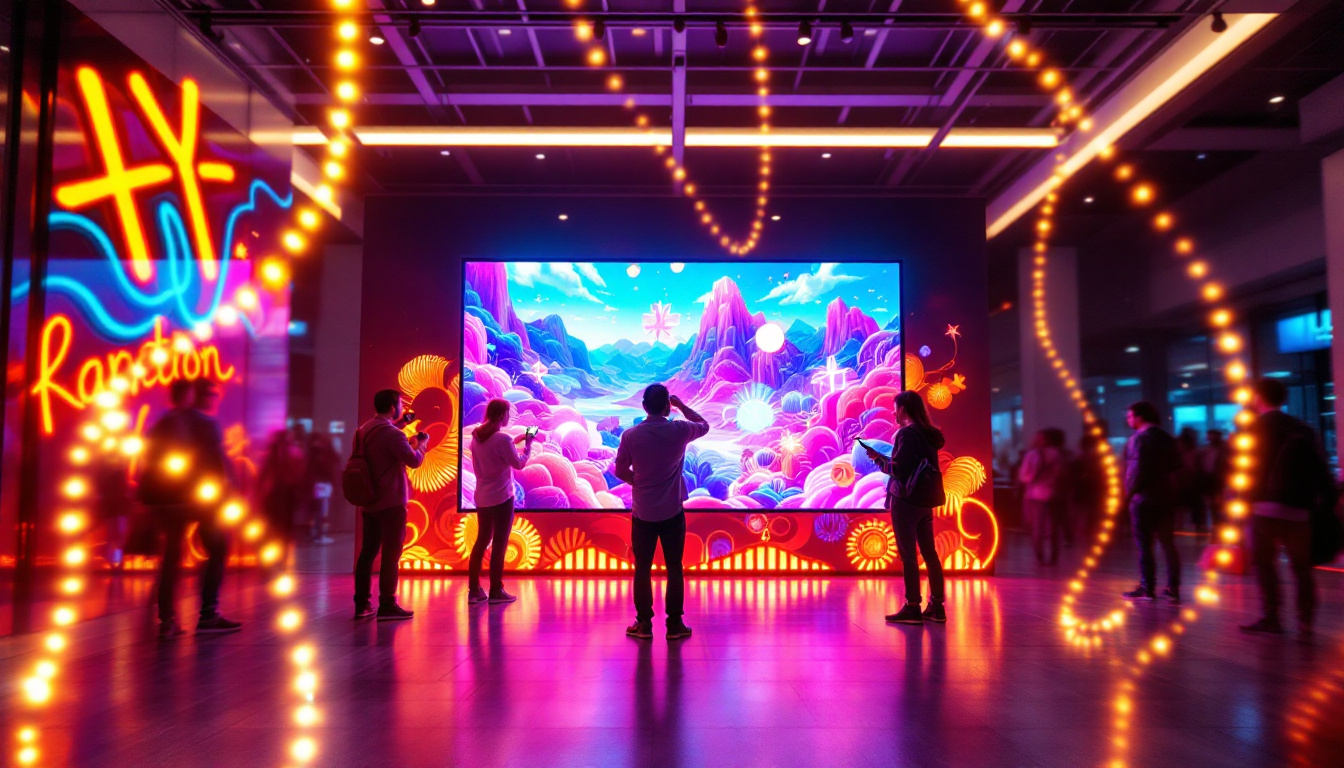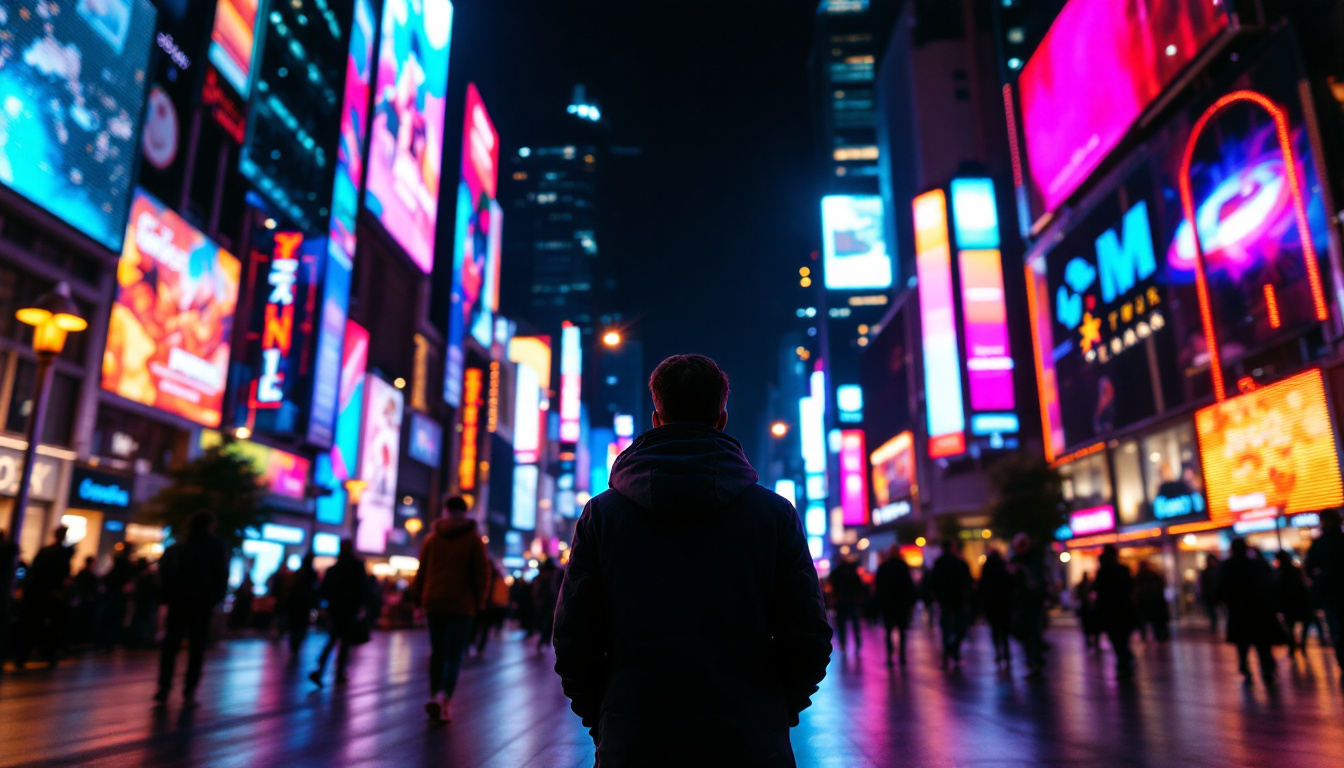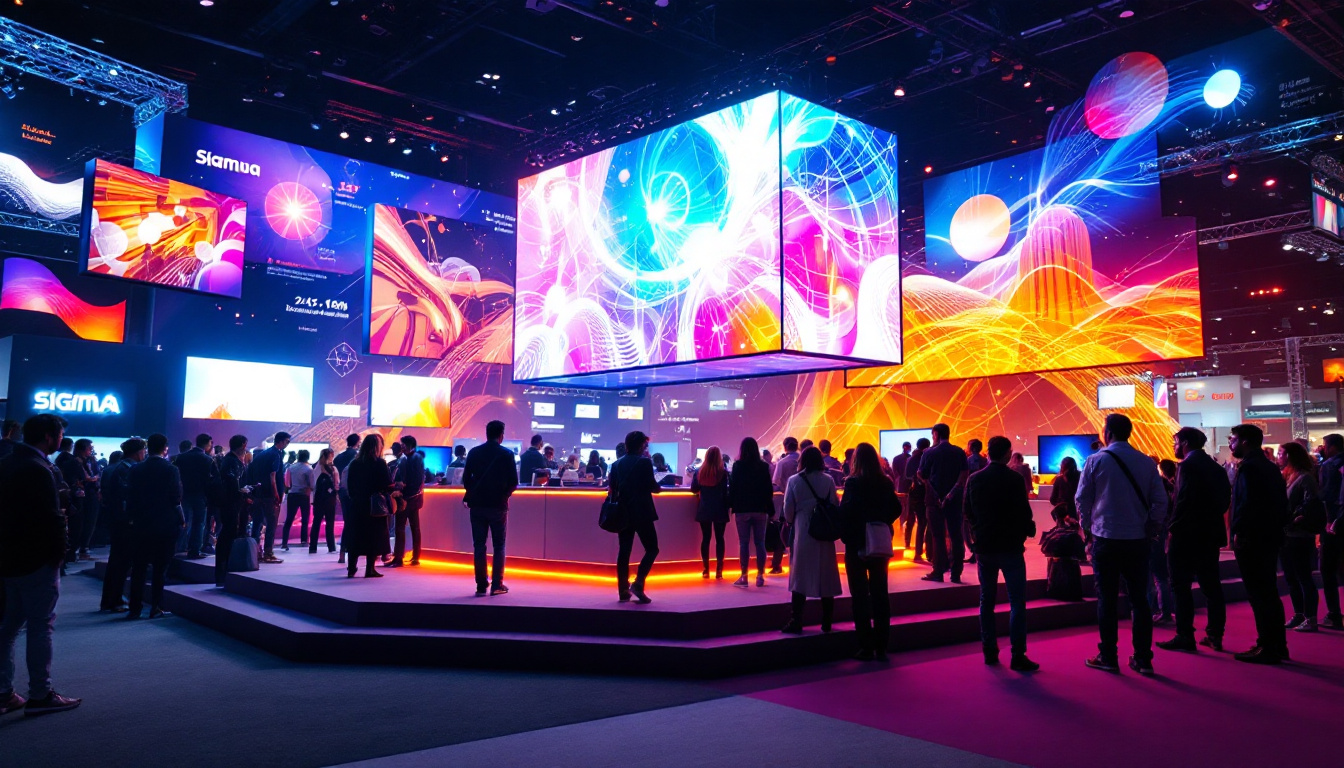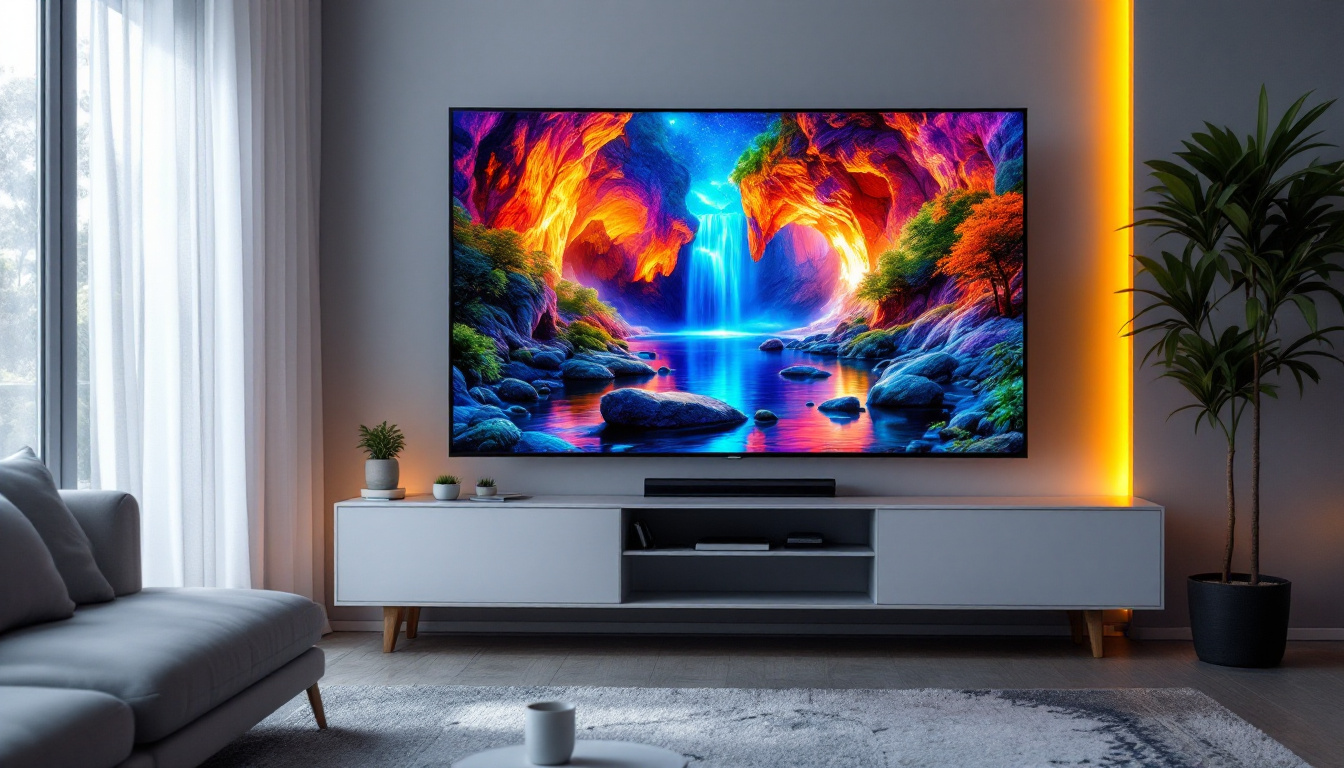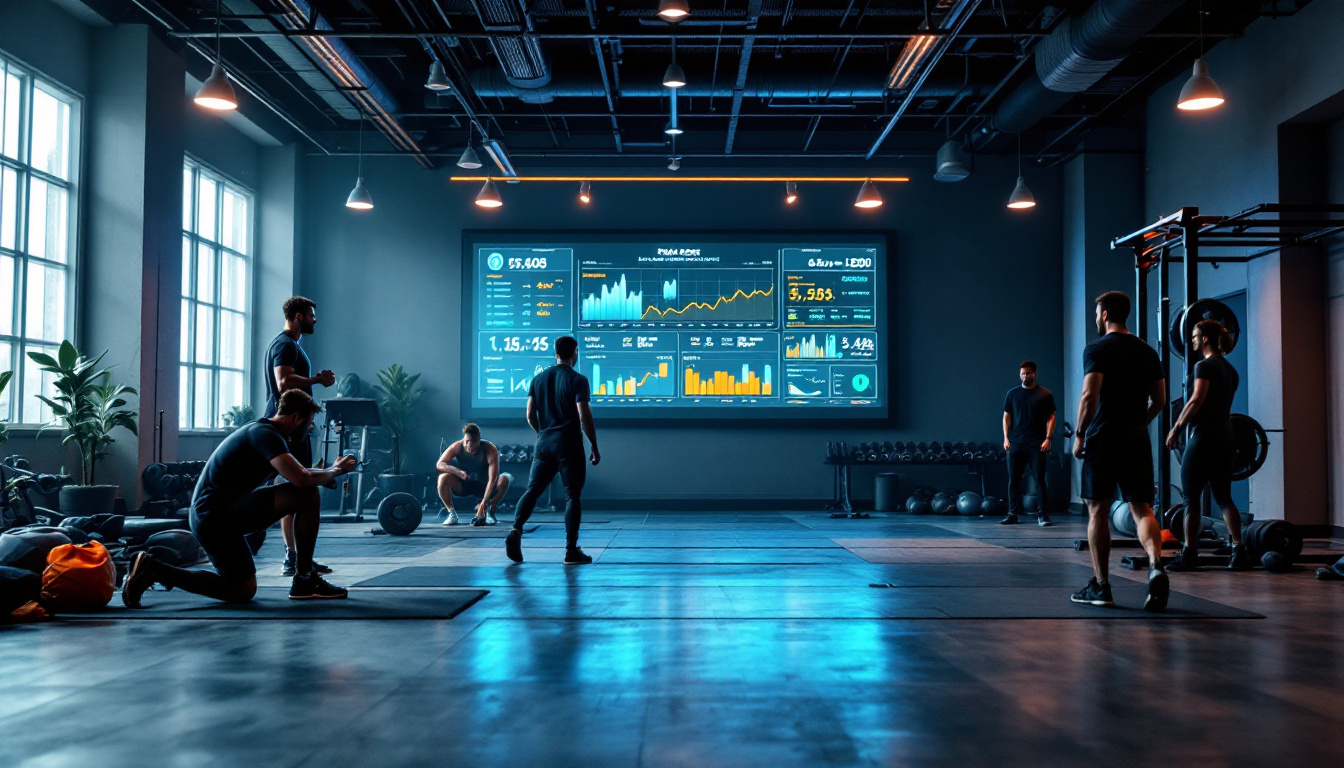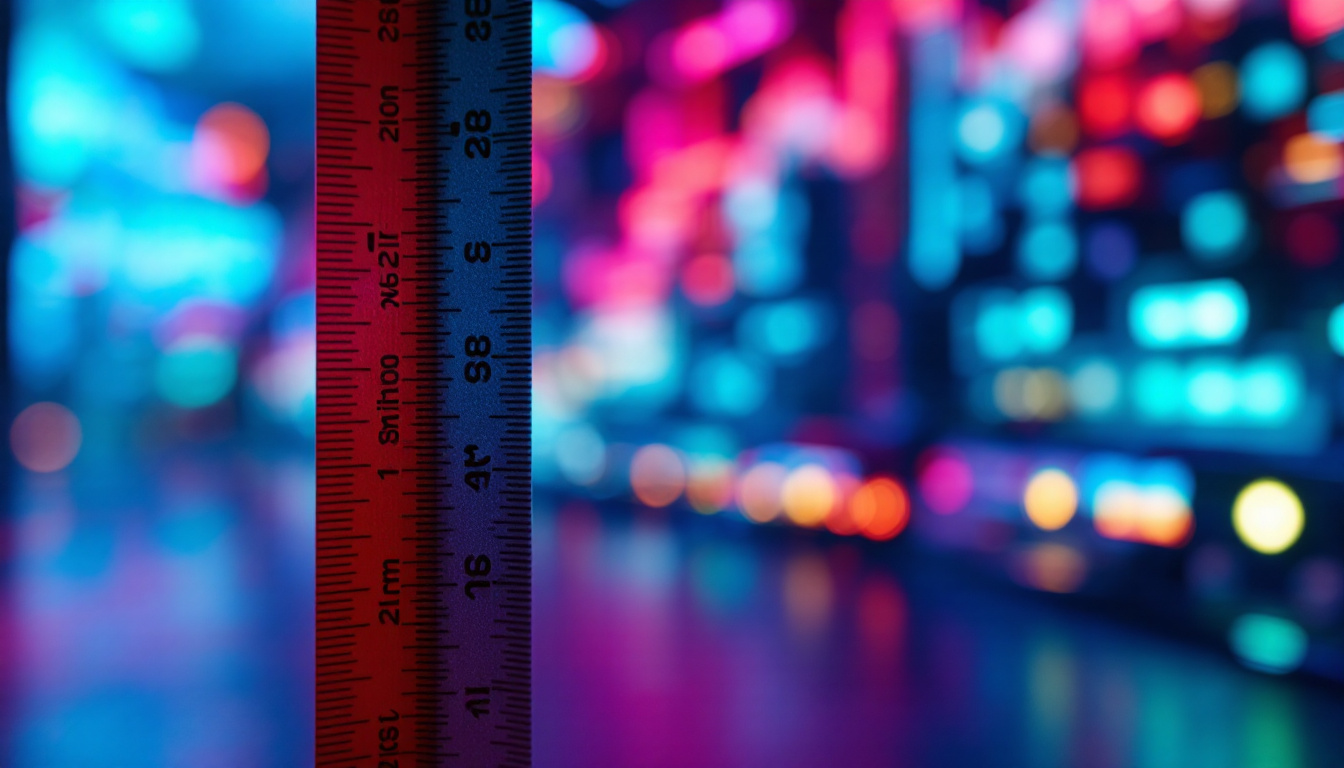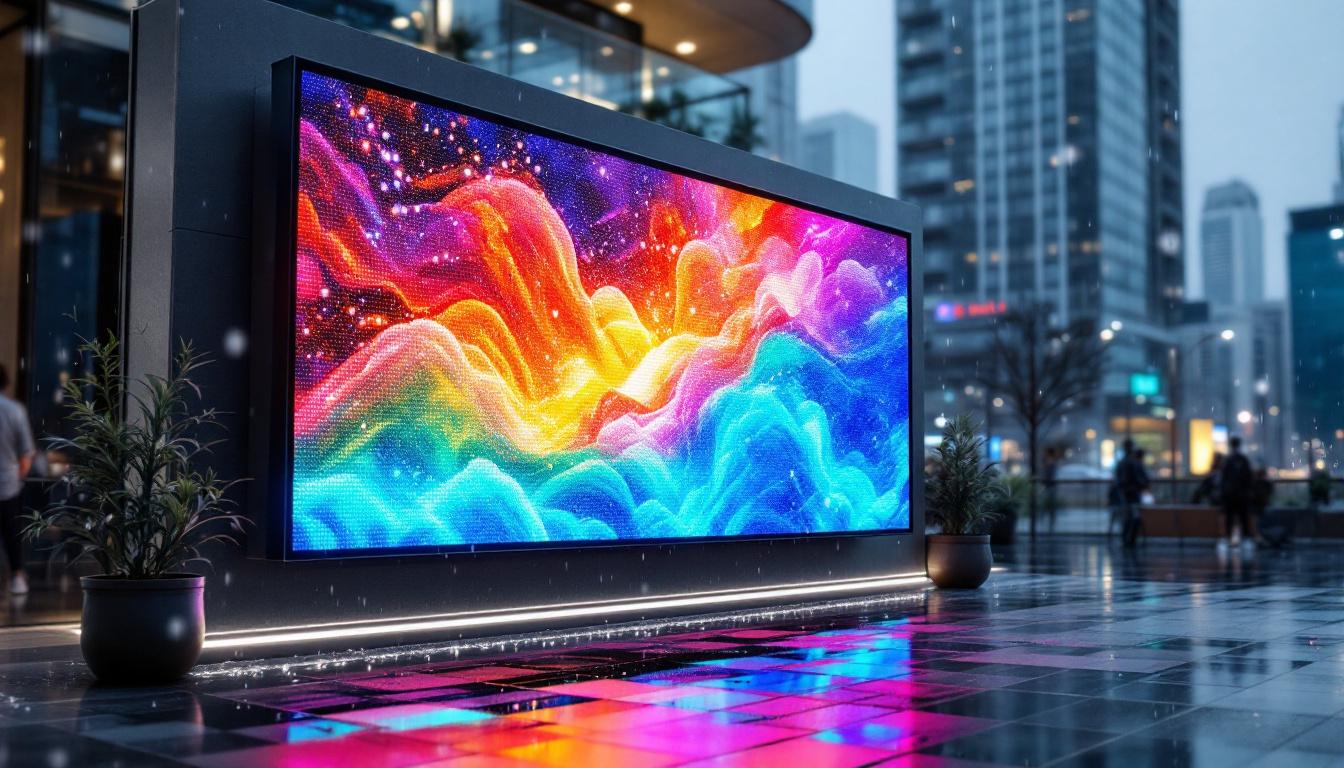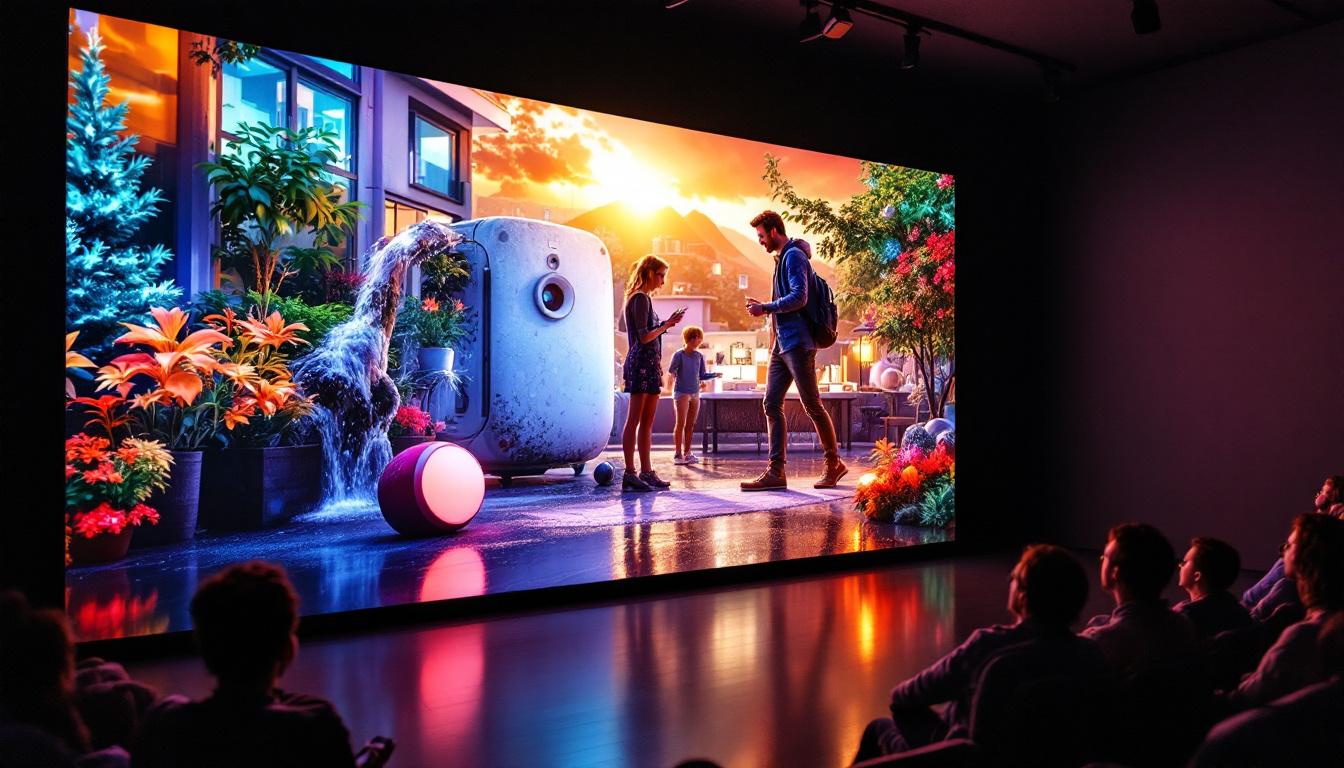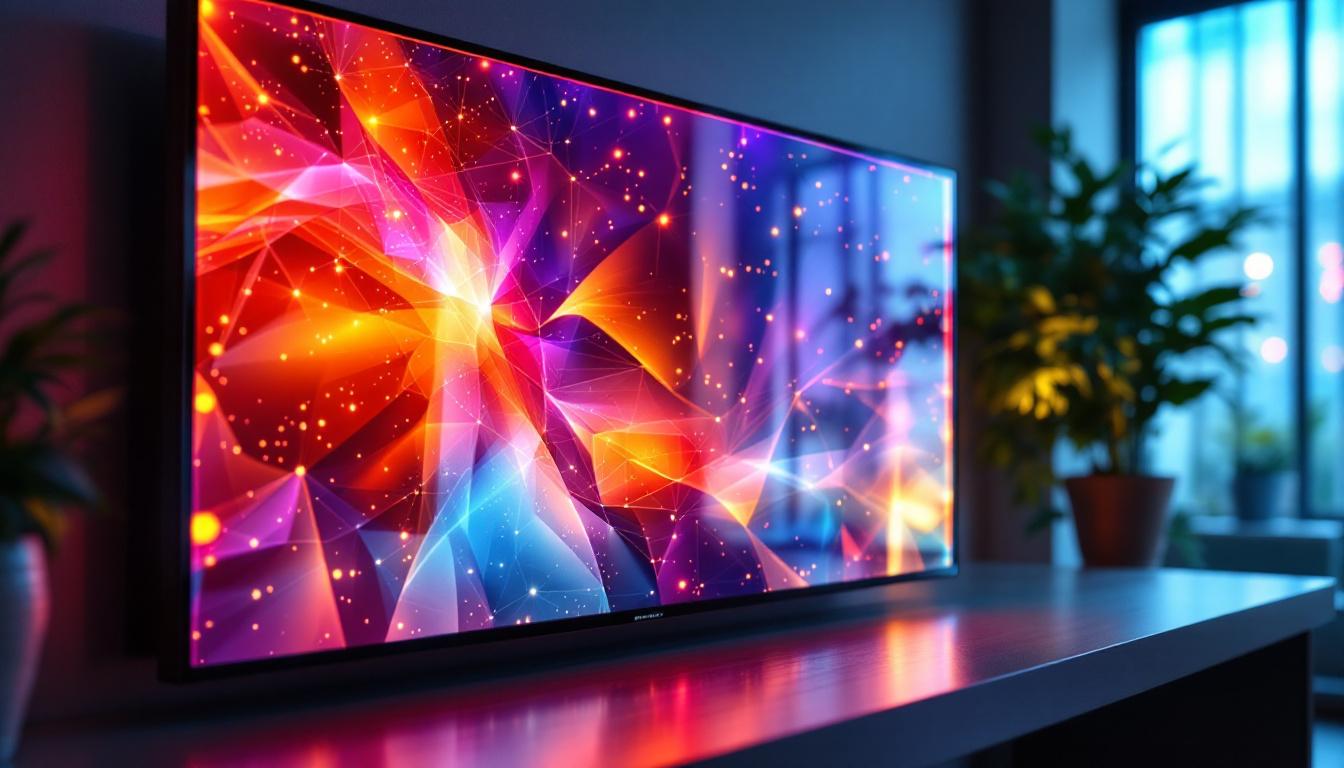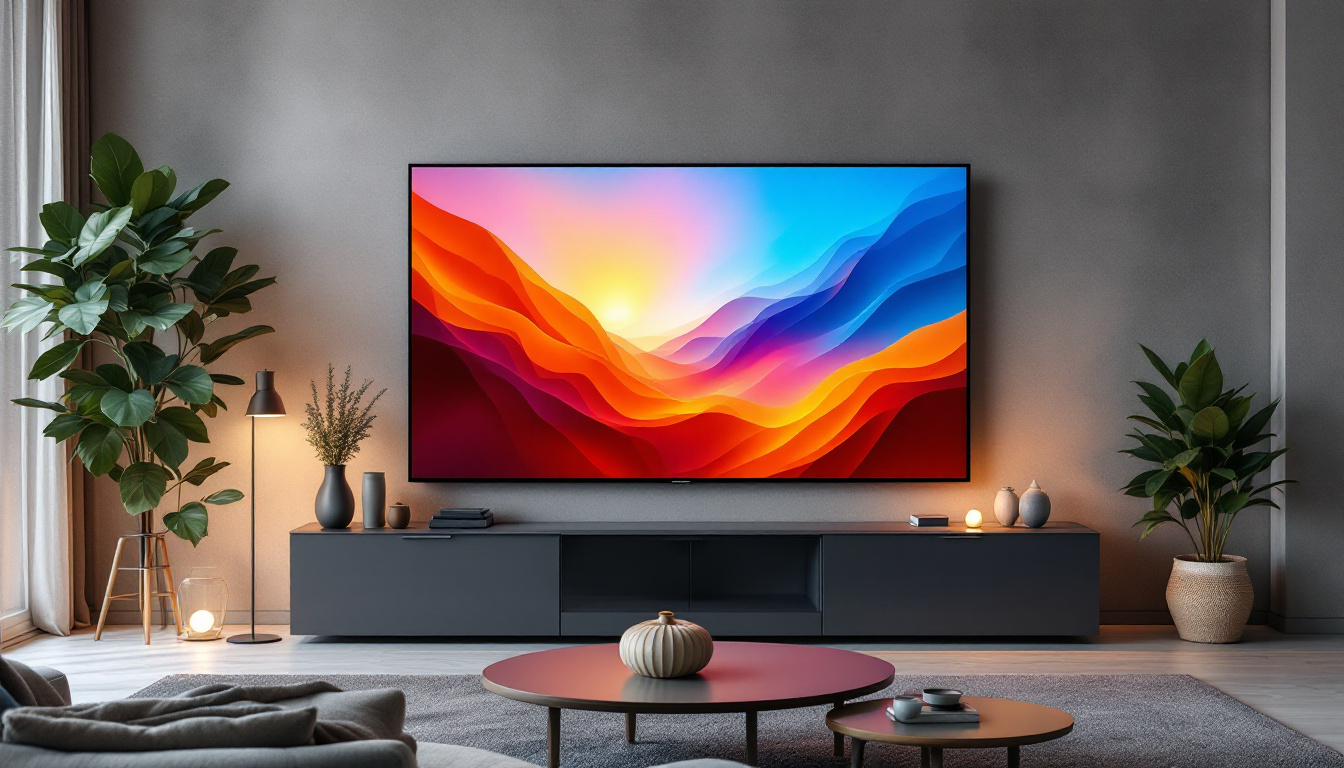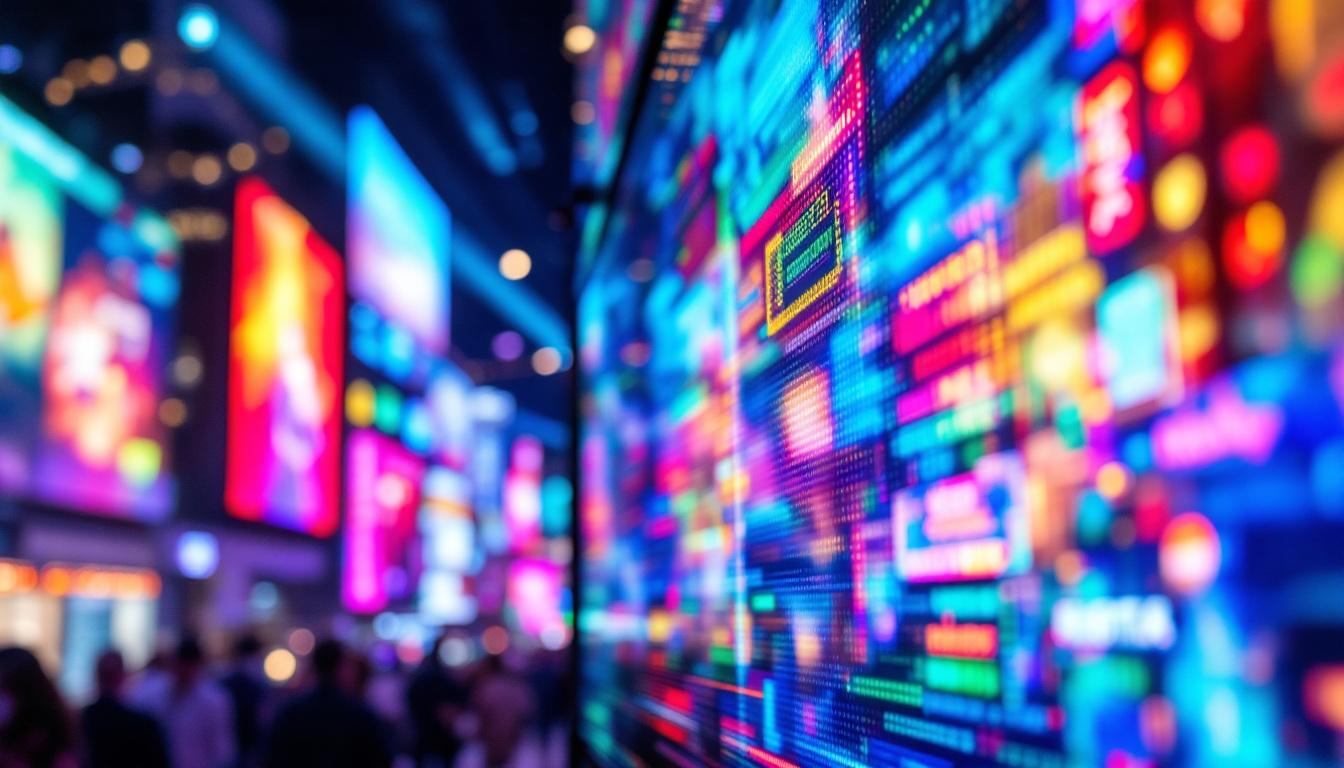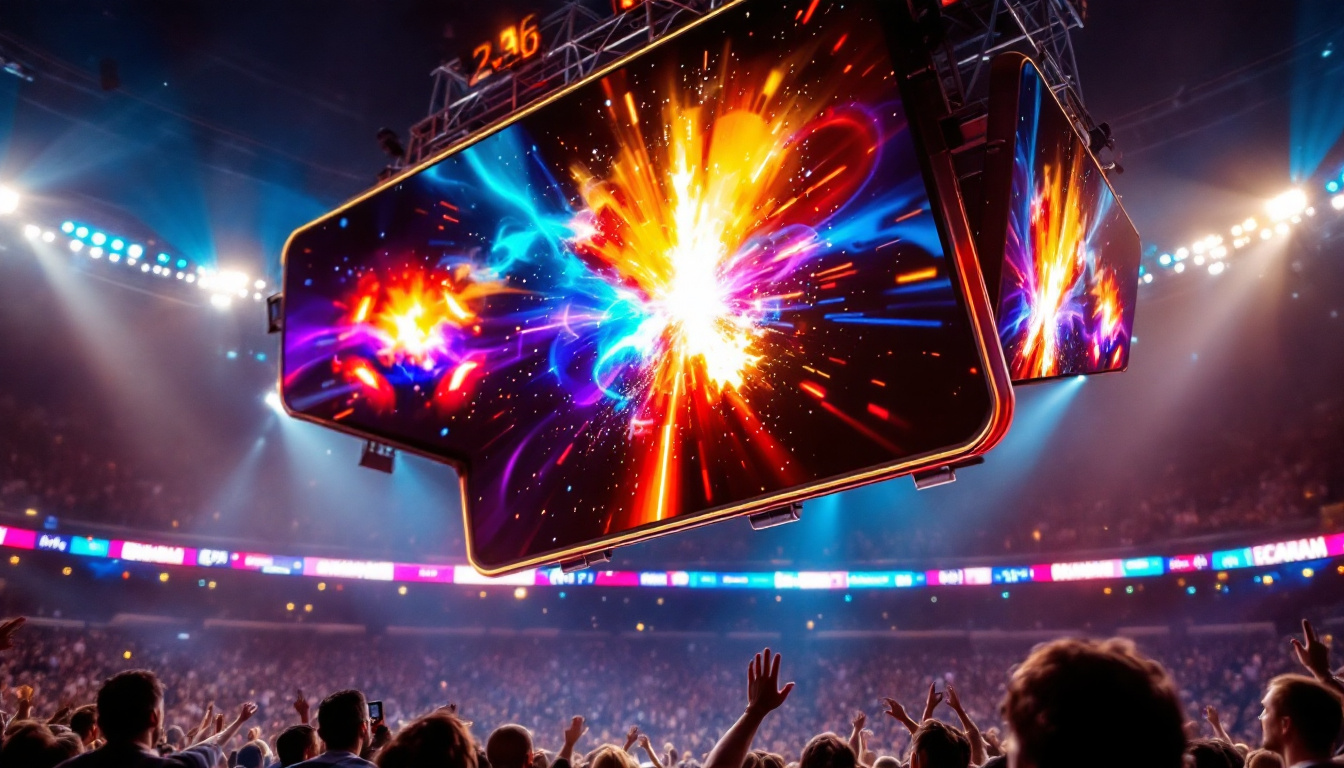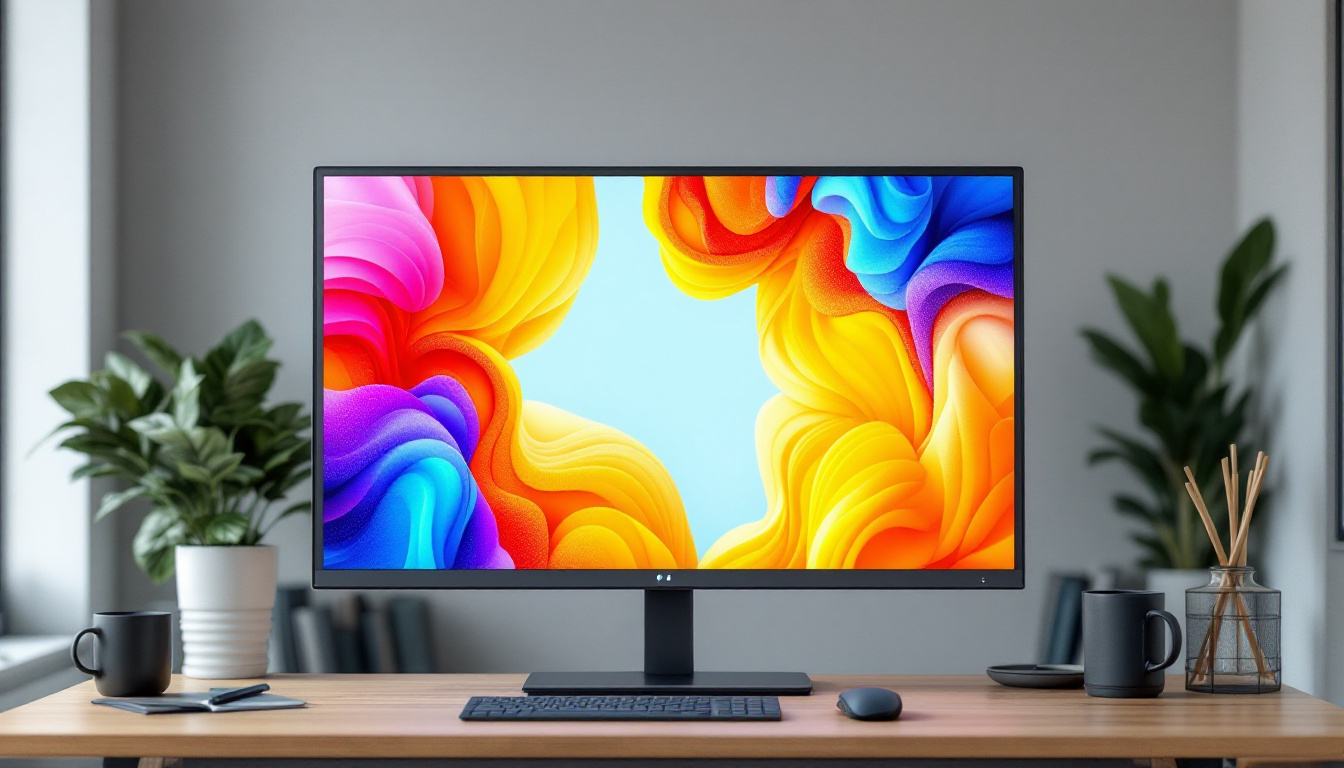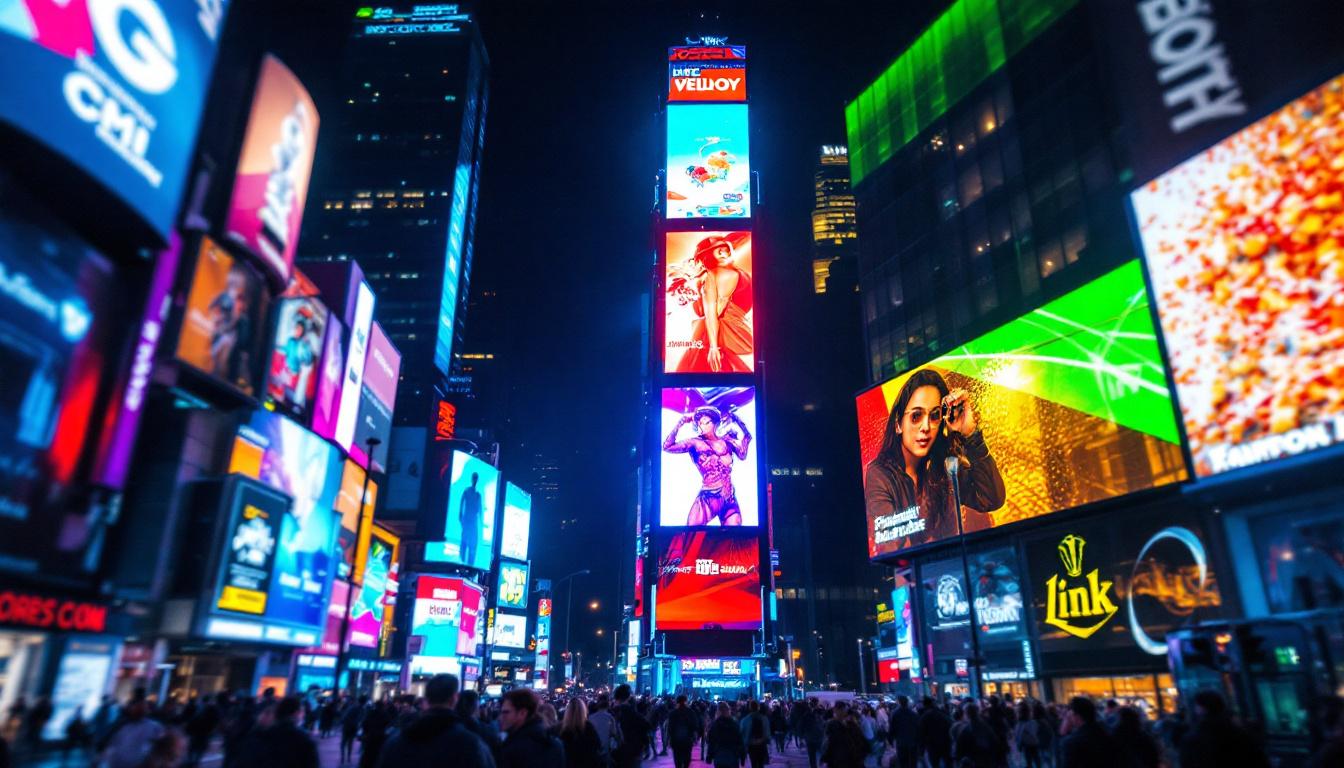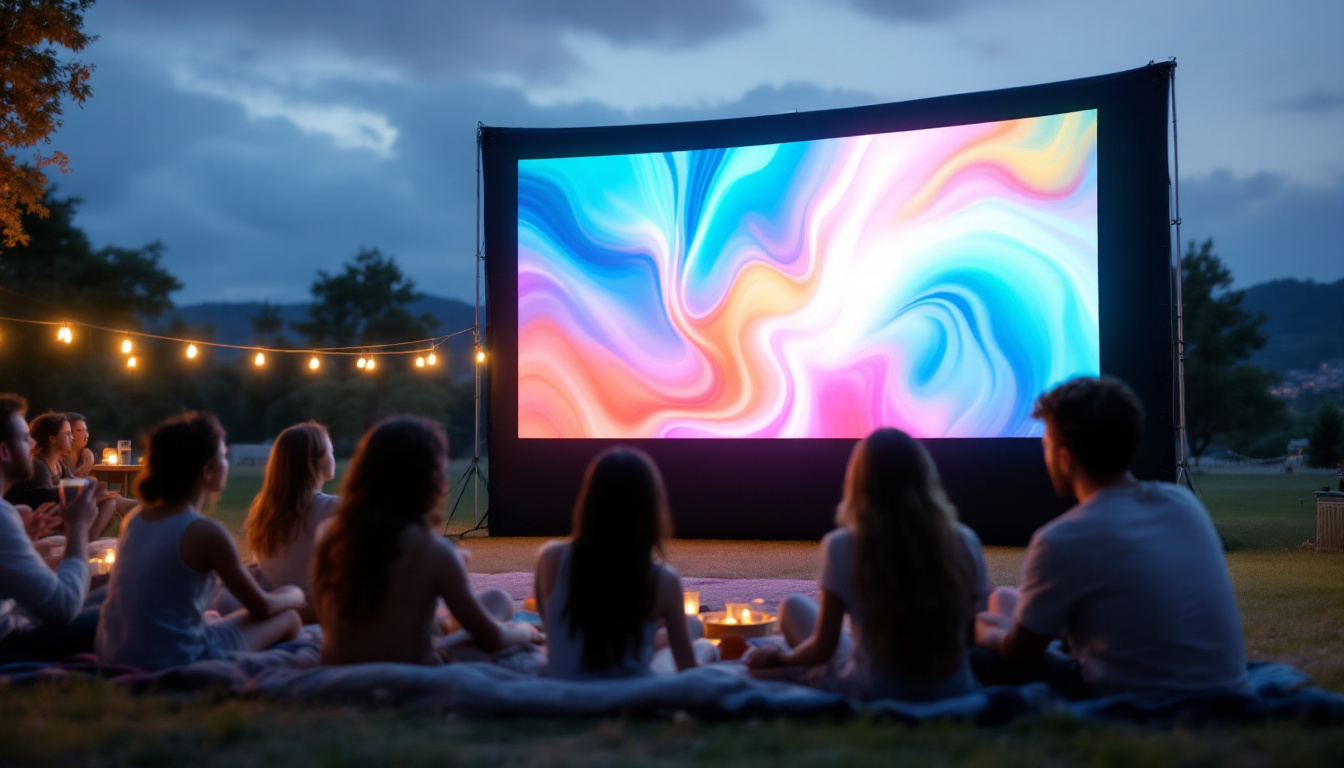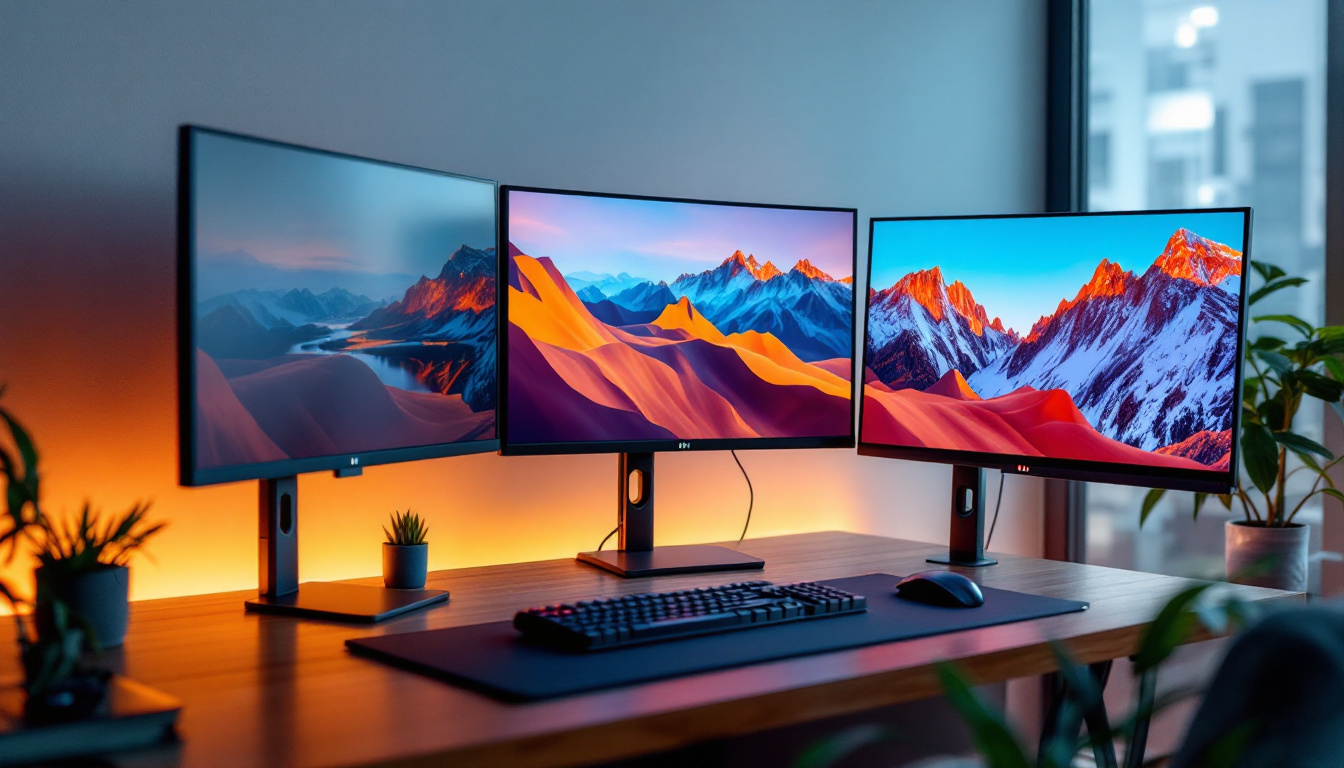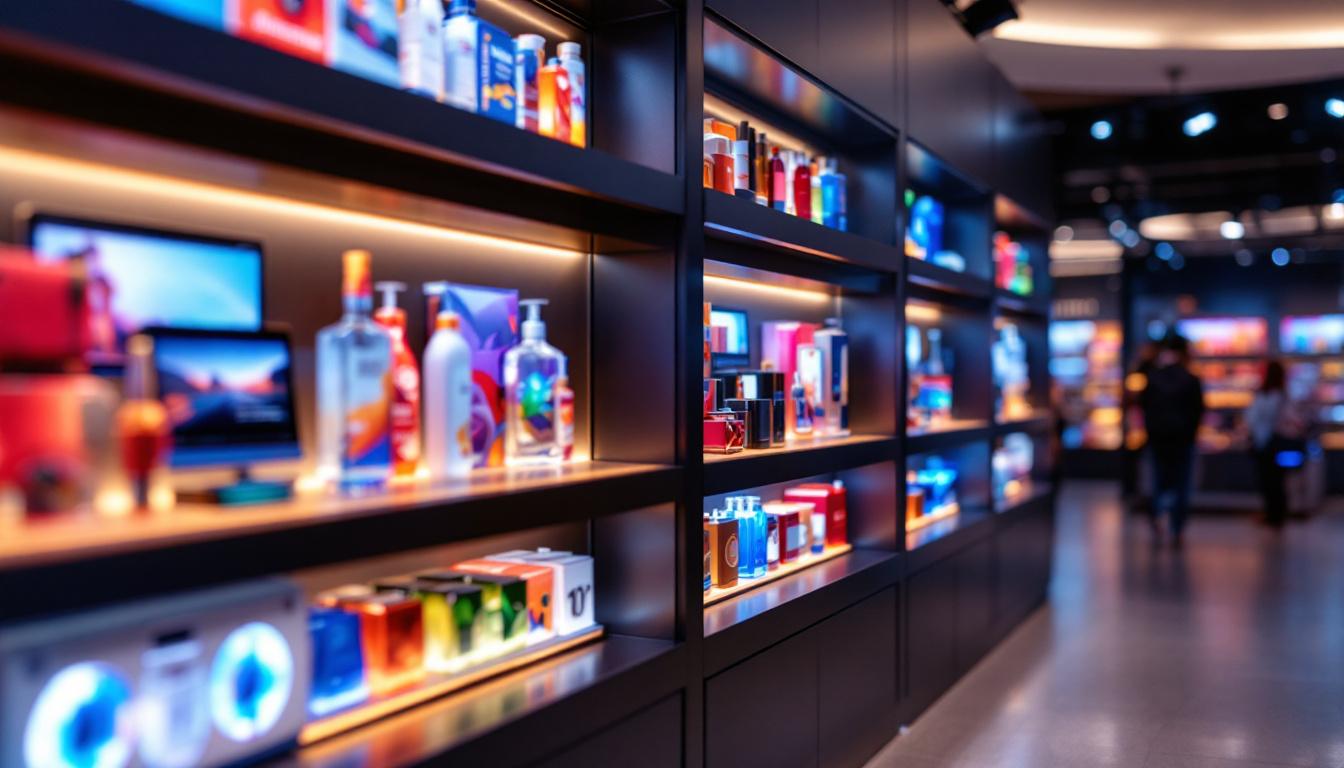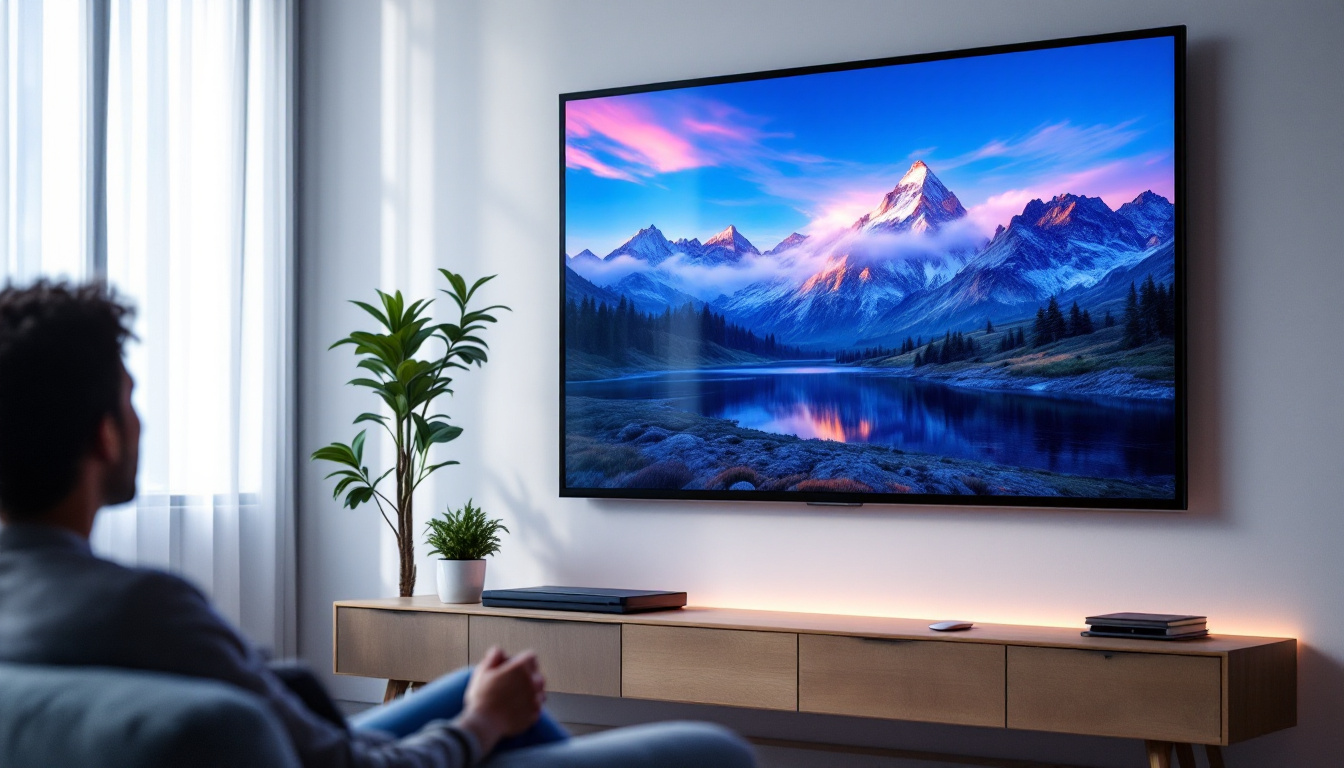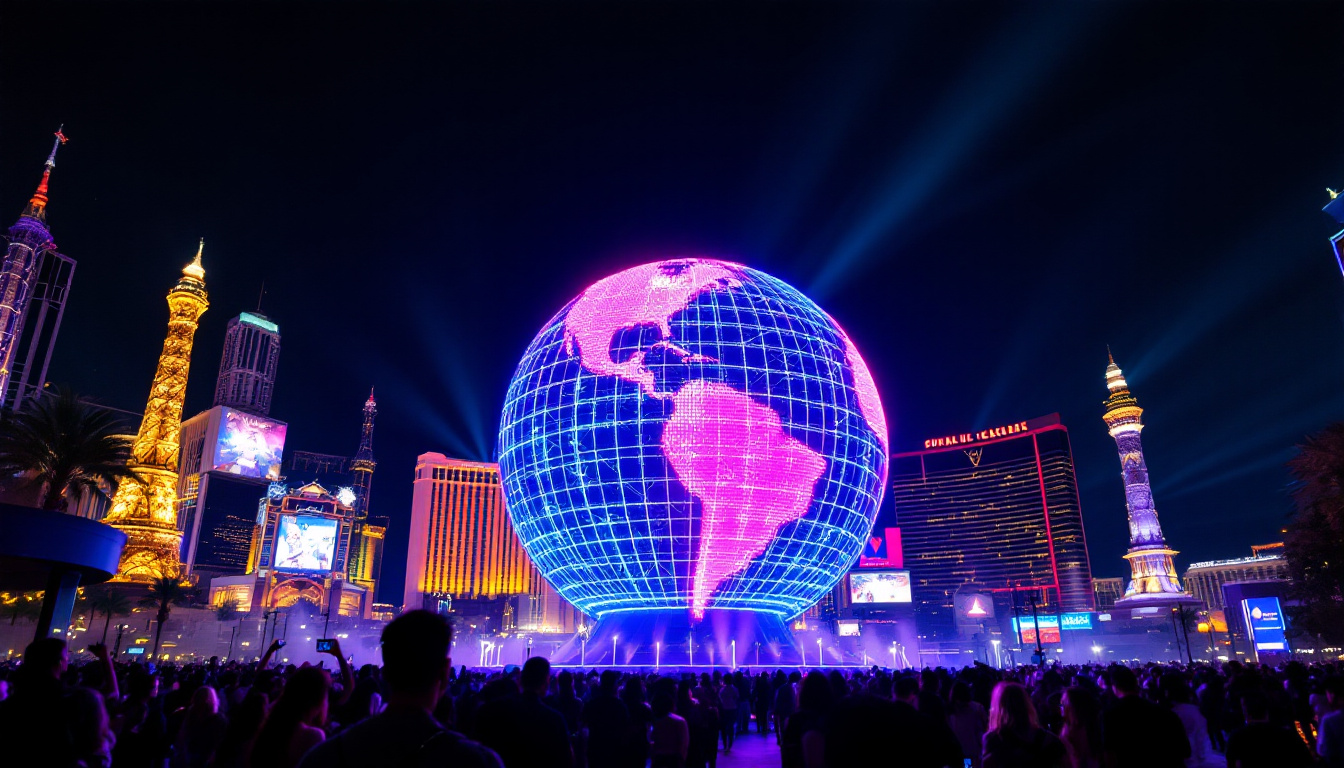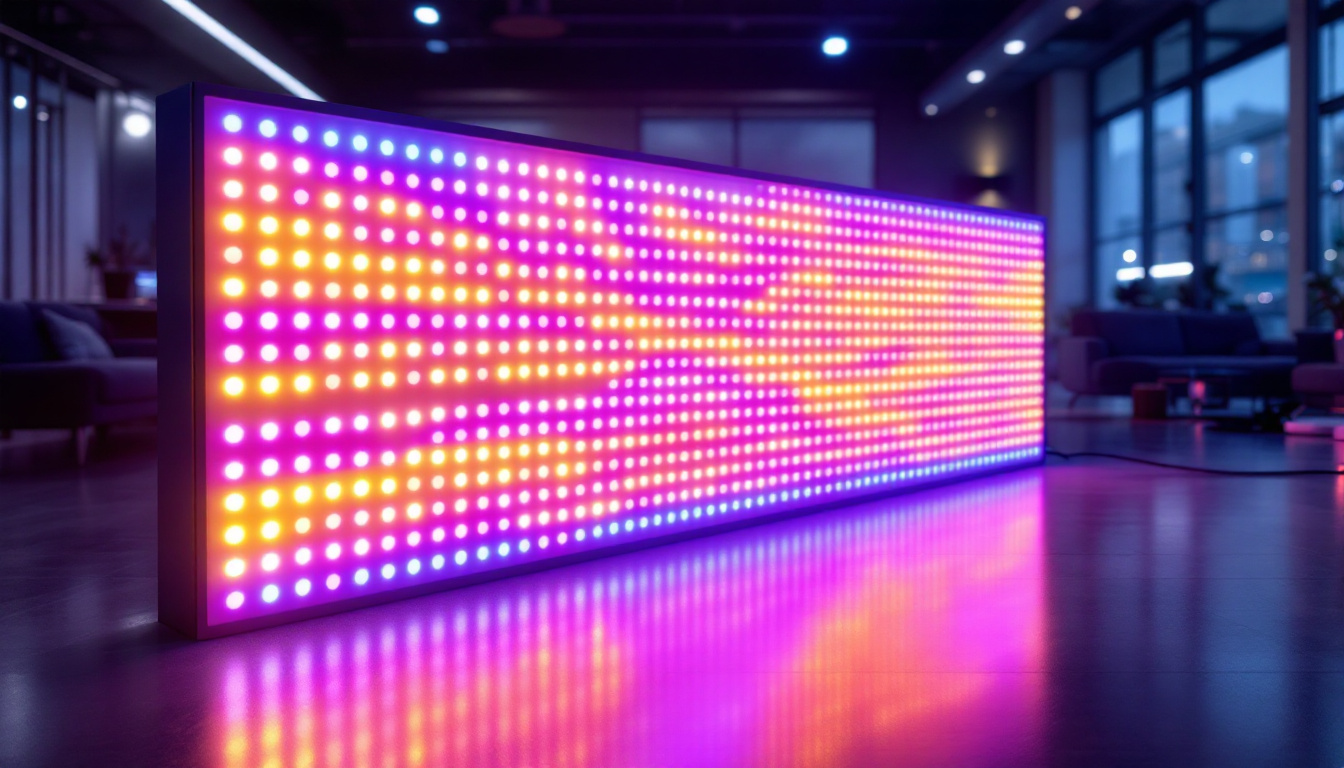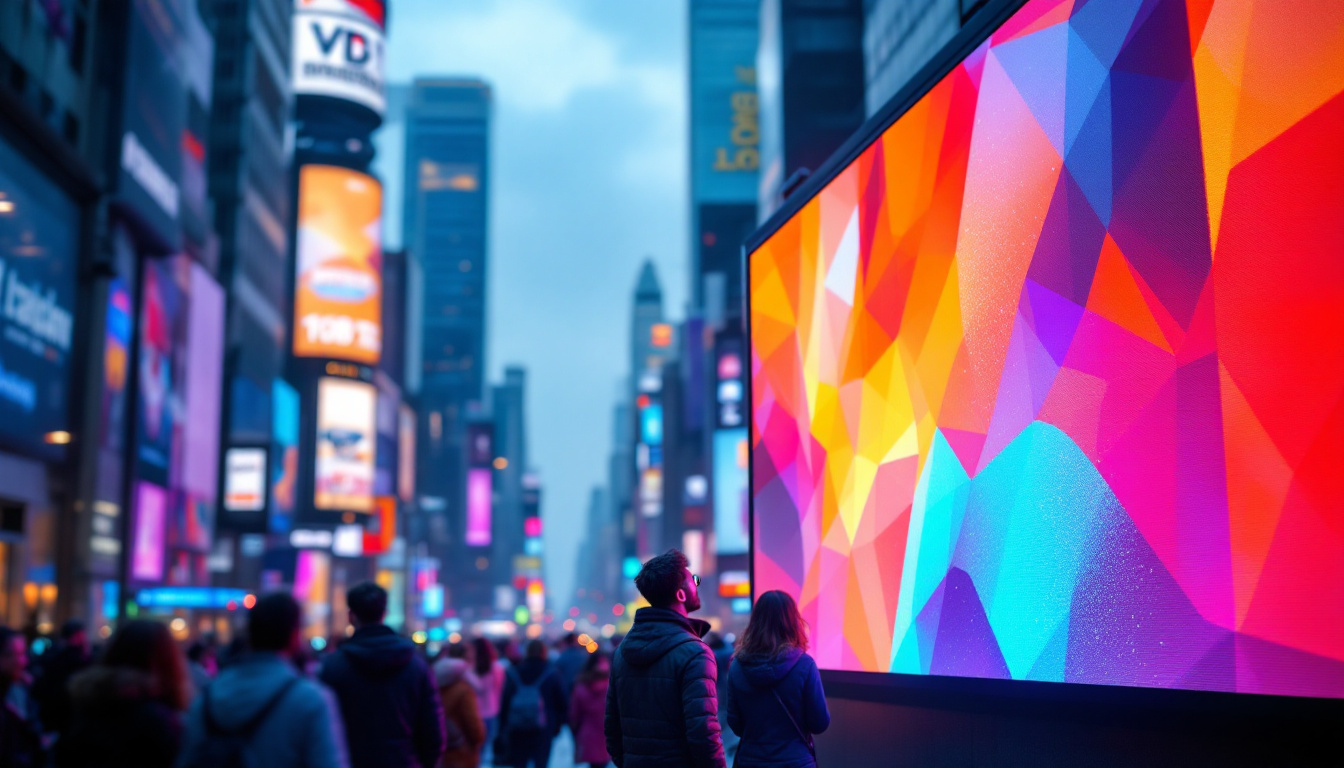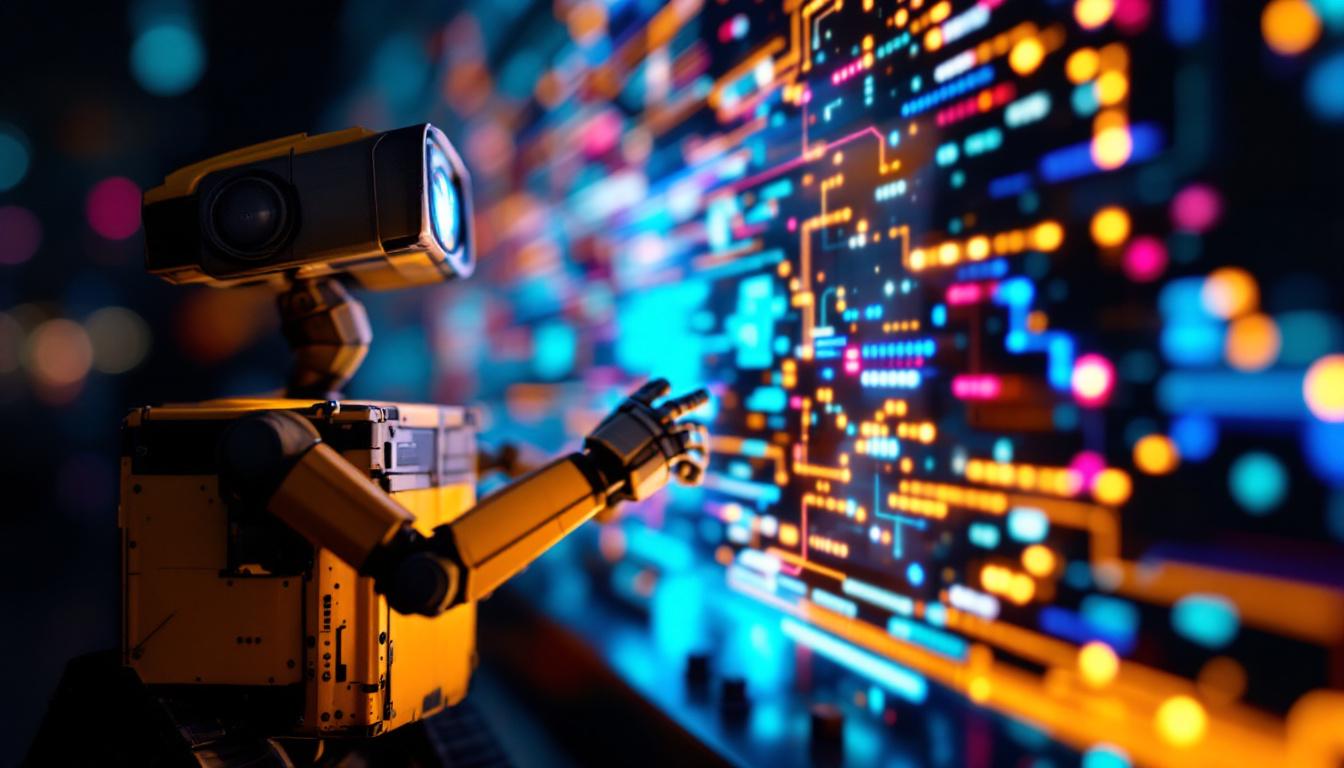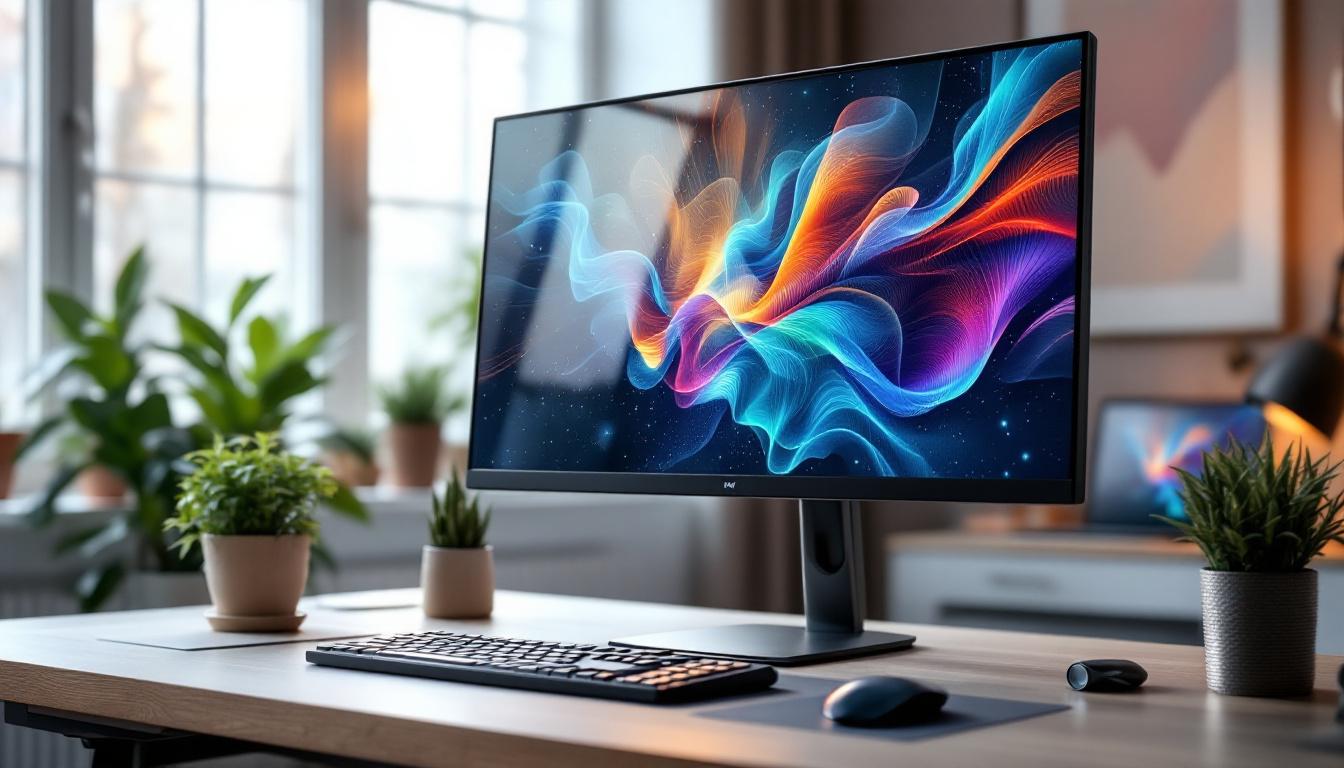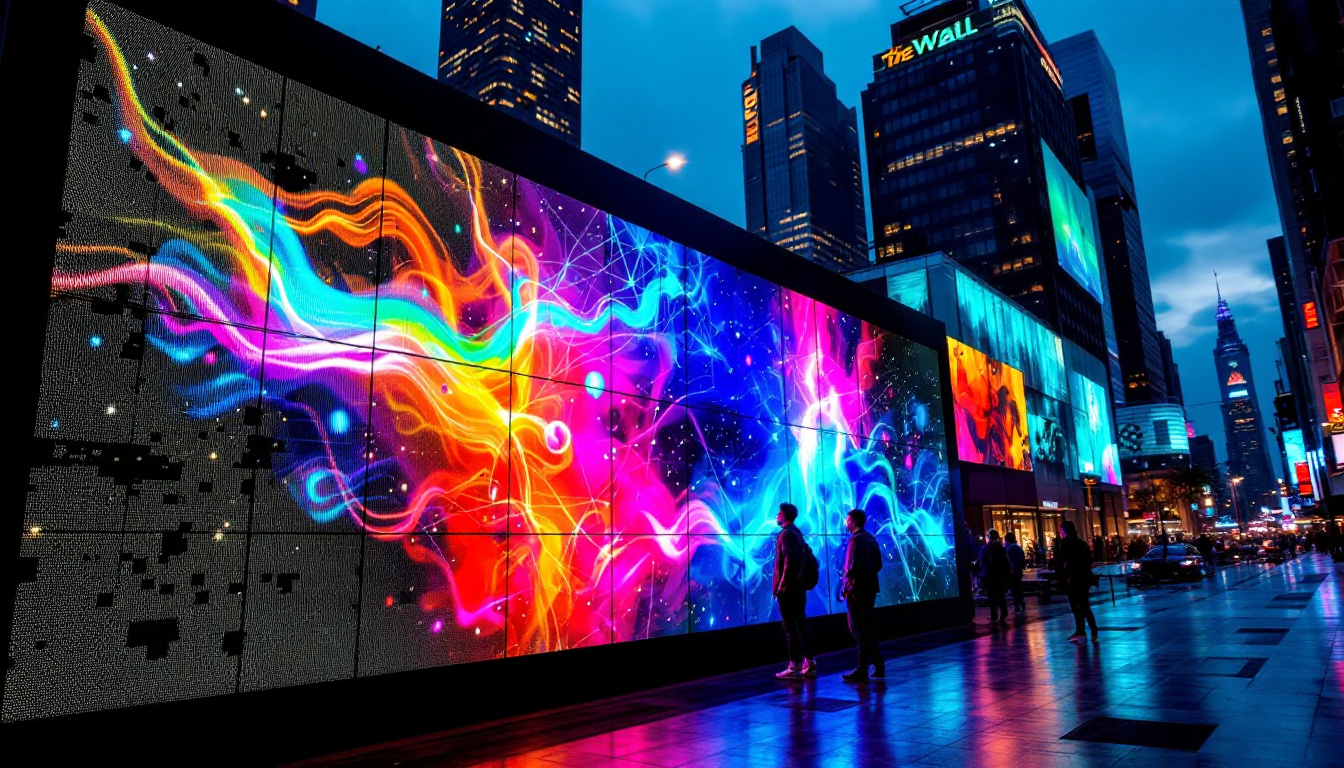In the realm of modern entertainment and commercial displays, LED technology has revolutionized the way content is presented. The concept of a TV wall, particularly one built with LED displays, has gained immense popularity in various settings, from home theaters to corporate environments. This article delves into the intricacies of LED display technology, the process of building a TV wall, and the benefits that come with it.
Understanding LED Technology
LED, or Light Emitting Diode, technology has transformed visual displays by providing brighter, more vibrant images compared to traditional LCD or plasma screens. The fundamental principle behind LED displays is relatively simple: when an electric current passes through a semiconductor material, it emits light. This technology allows for a wide range of applications, from small screens to massive video walls.
Types of LED Displays
There are several types of LED displays, each serving different purposes and environments. The most common types include:
- Direct View LED: This type consists of individual LED modules that are placed together to form a larger display. Direct view LED screens are often used in large-scale installations due to their ability to create seamless images without bezels.
- LED-backlit LCD: These displays utilize LED technology to illuminate an LCD panel. While they do not provide the same level of contrast as direct view LED, they are more affordable and widely used in consumer electronics.
- MicroLED: A newer technology that utilizes microscopic LEDs to create images. MicroLED displays promise higher resolutions and better energy efficiency, making them a potential game-changer in the industry.
Benefits of LED Displays
LED displays offer numerous advantages over traditional display technologies. Some of the key benefits include:
- Brightness: LED displays are incredibly bright, making them suitable for various lighting conditions, including outdoor environments.
- Energy Efficiency: Compared to older technologies, LEDs consume less power, resulting in lower energy bills and a reduced carbon footprint.
- Longevity: LED technology typically has a longer lifespan than traditional displays, reducing the need for frequent replacements.
Planning Your TV Wall Build
Before embarking on the journey of building a TV wall, careful planning is essential. This involves assessing the space, determining the purpose of the display, and selecting the right components.
Assessing the Space
The first step in planning a TV wall is to evaluate the available space. Consider factors such as wall dimensions, viewing distance, and ambient lighting. A larger space may accommodate a more extensive display, while smaller areas might benefit from a more compact setup. Additionally, the viewing distance plays a crucial role in determining the optimal screen size.
Defining the Purpose
Understanding the primary purpose of the TV wall is vital for selecting the right technology and features. For instance, a home theater might prioritize high-resolution displays for cinematic experiences, while a corporate environment may require screens that can handle presentations and video conferencing. Clearly defining the purpose will guide the selection of the display type, resolution, and additional features.
Selecting Components
Once the space and purpose have been established, the next step is to choose the components for the TV wall. This includes the LED panels, mounting hardware, video processors, and any additional accessories such as speakers or lighting. It’s crucial to ensure that all components are compatible and meet the desired specifications.
Building the TV Wall
With a solid plan in place, the construction of the TV wall can begin. This process involves several steps, from mounting the displays to configuring the video processing system.
Mounting the Displays
Mounting the LED displays is a critical step in the installation process. Depending on the design, displays can be mounted directly to the wall or on a dedicated frame. It is essential to use high-quality mounting hardware to ensure stability and safety. Additionally, the alignment of the displays must be precise to create a seamless visual experience.
Wiring and Connectivity
Once the displays are mounted, the next step is to handle the wiring and connectivity. This includes connecting the power supply, video cables, and any network connections. Proper cable management is crucial to avoid clutter and ensure a clean appearance. Utilizing cable conduits or raceways can help maintain an organized setup.
Configuring the Video Processing System
The video processing system is responsible for managing the content displayed on the TV wall. This may involve using a video wall controller that can split images across multiple screens or a software solution that allows for dynamic content management. Configuring the system correctly is essential for achieving the desired visual effects and ensuring smooth operation.
Content Management for LED Displays
After the physical setup is complete, attention must turn to content management. The effectiveness of a TV wall is not solely determined by the hardware; the content displayed plays a crucial role in engaging the audience.
Content Creation
Creating high-quality content tailored to the display’s specifications is vital. This may involve producing videos, graphics, and animations that take full advantage of the LED technology. Content should be visually appealing and relevant to the audience, whether for entertainment, advertising, or information dissemination.
Content Scheduling and Playback
For dynamic displays, a content management system (CMS) can facilitate scheduling and playback. This allows users to plan when specific content will be shown, ensuring that the display remains fresh and engaging. Many CMS solutions offer features such as remote access, enabling users to update content from anywhere.
Monitoring and Maintenance
Regular monitoring and maintenance are essential to keep the TV wall functioning optimally. This includes checking for any display issues, ensuring that the content is up-to-date, and performing routine cleaning. Establishing a maintenance schedule can help prevent potential problems and extend the lifespan of the displays.
Case Studies: Successful TV Wall Implementations
To illustrate the versatility and effectiveness of LED TV walls, several case studies highlight successful implementations across different sectors.
Corporate Environments
In a corporate setting, a leading technology firm installed a large LED TV wall in their headquarters’ lobby. The display serves multiple purposes: showcasing company achievements, providing real-time data analytics, and displaying promotional content. The seamless integration of the TV wall has enhanced the company’s branding and provided an engaging experience for visitors.
Retail Spaces
A prominent retail chain utilized an LED TV wall to create an immersive shopping experience. The display features vibrant advertisements, product demonstrations, and interactive content that encourages customer engagement. By strategically placing the TV wall at the entrance, the retailer effectively captures the attention of passersby, driving foot traffic into the store.
Entertainment Venues
In the entertainment industry, a major sports arena implemented a massive LED TV wall to enhance the spectator experience. The display is used for live game coverage, replays, and promotional content during events. The high brightness and clarity of the LED technology ensure that every seat in the arena has a great view, significantly improving fan engagement and satisfaction.
Challenges and Considerations
While building a TV wall with LED displays offers numerous benefits, several challenges and considerations must be addressed to ensure a successful installation.
Cost Implications
One of the primary challenges is the initial cost of the LED technology. High-quality LED displays can be expensive, and the overall budget must account for additional components such as mounting hardware, video processors, and installation services. However, it is essential to view this as a long-term investment, as the durability and energy efficiency of LED displays can lead to significant savings over time.
Technical Expertise
Building and configuring a TV wall requires a certain level of technical expertise. Businesses and individuals may need to hire professionals for installation and setup, which can add to the overall cost. Ensuring that the team involved has experience with LED technology and video wall systems is crucial for achieving the desired results.
Environmental Factors
Environmental considerations also play a role in the effectiveness of LED displays. Factors such as ambient light, temperature, and humidity can affect the performance of the displays. For outdoor installations, selecting weather-resistant components and ensuring proper ventilation is essential to maintain functionality and longevity.
The Future of LED TV Walls
The future of LED TV walls looks promising, with advancements in technology continually pushing the boundaries of what is possible. Innovations such as flexible LED displays, improved energy efficiency, and enhanced interactivity are set to transform the landscape of visual displays.
Trends to Watch
Several trends are emerging in the LED display market that could shape the future of TV walls:
- Increased Resolution: As technology improves, higher resolution displays are becoming more accessible. This trend allows for more detailed and immersive viewing experiences, particularly in large installations.
- Interactive Displays: The integration of touch technology and interactive features is gaining traction. This allows users to engage with the content in new ways, making the viewing experience more dynamic.
- Sustainability: As environmental concerns grow, manufacturers are focusing on creating more sustainable LED solutions. This includes using eco-friendly materials and improving energy efficiency to reduce the overall carbon footprint.
Conclusion
Building a TV wall with LED displays is a multifaceted process that requires careful planning, execution, and ongoing management. The benefits of LED technology, combined with the ability to create captivating visual experiences, make it an attractive option for various applications. As technology continues to evolve, the possibilities for LED TV walls are virtually limitless, paving the way for innovative and engaging displays in the future.
Whether for personal entertainment, corporate branding, or immersive retail experiences, understanding the intricacies of LED display technology is essential for anyone looking to invest in a TV wall. By leveraging the advantages of LED technology, users can create stunning visual displays that captivate audiences and enhance their environments.
Discover the Future of LED Displays with LumenMatrix
Ready to transform your space with the latest in LED display technology? LumenMatrix is at the forefront of innovation, offering a diverse range of LED display solutions tailored to your needs. From captivating Indoor LED Walls to dynamic Outdoor LED Displays and beyond, our mission is to enhance your visual communication with unparalleled clarity and impact. Don’t just take our word for it; experience the difference yourself. Check out LumenMatrix LED Display Solutions today and step into a world where your message shines brighter than ever.


